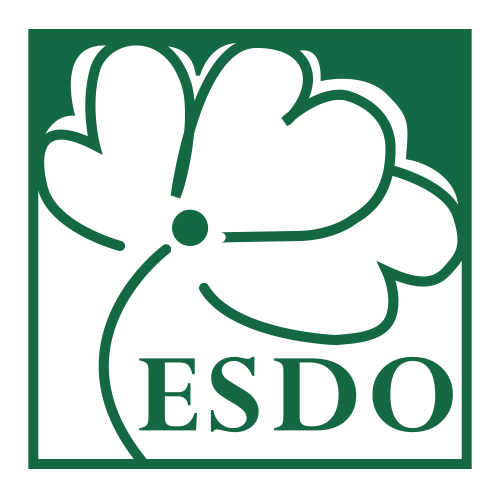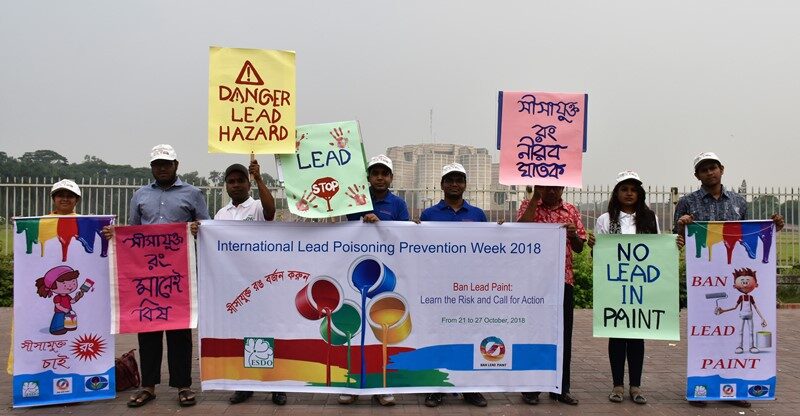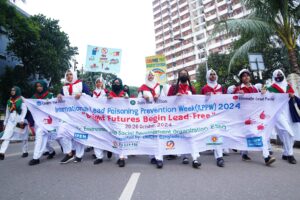Dust from lead paint is still the number one source of childhood lead poisoning. So focusing this on the eve of International Lead Poisoning Prevention Week-2018 under the theme of ‘Learn The Risk, Call For Action, Ban Lead Paint’ a human chain was formed on 20 October 2018 in front of Manik Mia Ave (Jatiya Sangsad Bhaban), TSC and Press Club to phase out lead-containing paints globally by 2020.
Lead poisoning is preventable, yet the Institute for Health Metrics and Evaluation has estimated that, based on 2016 data, lead exposure accounted for 540 000 deaths and 13.9 million years lost to disability and death due to long-term health effects, with the highest burden in developing regions. Of particular concern is the role of lead exposure in the development of intellectual disability in children. Even though there is wide recognition of the harmful effects of lead and many countries have taken action, exposure to lead, particularly in childhood, remains of key concern to healthcare providers and public health officials worldwide. An important source of domestic lead exposure, particularly in children, is paint containing high levels of lead. These paints are still widely available and used in many countries for decorative purposes, although good substitutes without lead are available. In Bangladesh, ESDO has been working for specific regulation of lead-free paint and thus, has been conducting policy advocacy since 2010. In line with this ESDO has conducted a study, paint sample analyses, and an awareness campaign and ultimately prepared a draft regulatory framework and submitted it to the Department of Environment (DoE). ESDO looks forward to achieving a toxic-free future through complete regulation of lead paint in Bangladesh.



